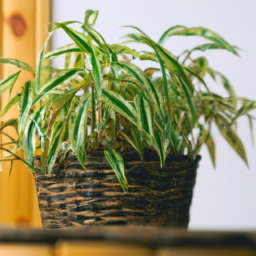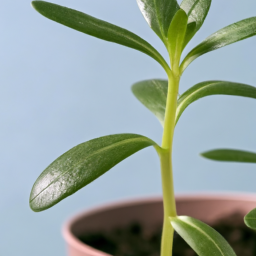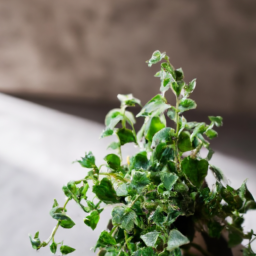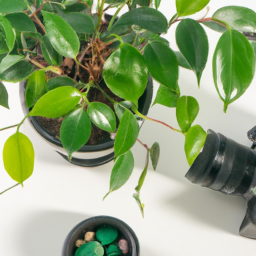
Are you looking to dip your toes into the world of gardening but not sure where to start? Look no further! Today, we’re going to discuss the best beginner plant for those just starting out on their green thumb journey. Whether you have a green space to fill or just want to add a touch of nature to your home, choosing the right plant can make all the difference. So, let’s explore some options that are easy to care for and perfect for beginners.
Top 5 Easy-to-Grow Plants for Beginners
Choosing the Right Plant
When it comes to choosing the best beginner plant, it’s important to consider a few key factors. First and foremost, you’ll want to select a plant that is known for being low-maintenance and forgiving of beginner mistakes. Plants that are resilient and adaptable are ideal for those who are new to gardening. Additionally, consider the amount of sunlight and water the plant will need, as well as the climate in which you live.
One excellent option for beginners is the spider plant. Spider plants are known for their air-purifying qualities and are incredibly easy to care for. They thrive in indirect sunlight and only need to be watered occasionally. Another great choice is the pothos plant, which is virtually impossible to kill. Pothos plants can survive in low light conditions and only need to be watered when the soil is dry to the touch.
If you’re looking for something a little more colorful, consider a peace lily. Peace lilies are known for their beautiful white flowers and are relatively easy to care for. They prefer indirect sunlight and should be watered once a week. For those who want to try their hand at growing herbs, basil is a fantastic option. Basil plants thrive in sunny locations and should be watered regularly. Plus, you’ll have fresh herbs to use in your cooking!
Caring for Your Plants
Once you’ve selected the perfect beginner plant, it’s important to know how to care for it properly. One of the most crucial aspects of plant care is watering. Overwatering is a common mistake that many beginners make, so be sure to only water your plant when the soil is dry to the touch. It’s also important to provide your plant with the right amount of sunlight. Most beginner plants prefer indirect sunlight, so be sure to place them in a location where they will receive gentle, filtered light.
In addition to watering and sunlight, it’s important to keep an eye out for pests and diseases. Spider mites, aphids, and mealybugs are common pests that can wreak havoc on your plants. If you notice any signs of infestation, be sure to take action immediately. You can use natural remedies such as neem oil or insecticidal soap to combat pests.
Regularly pruning and fertilizing your plants is also essential for their health and growth. Pruning helps to promote new growth and prevent legginess, while fertilizing provides your plants with the nutrients they need to thrive. Be sure to follow the specific care instructions for your plant to ensure that it remains healthy and happy.
Troubleshooting Common Issues
Even with the best intentions, problems can still arise when caring for plants. One common issue that beginners face is yellowing leaves. This can be caused by overwatering, underwatering, or nutrient deficiencies. To address this problem, carefully assess your plant’s care routine and make adjustments as needed.
Another common issue is wilting or drooping leaves, which can be a sign of underwatering or root rot. If your plant is wilting, check the soil moisture and adjust your watering schedule accordingly. If you suspect root rot, gently remove the plant from its pot and inspect the roots for signs of decay.
Finally, if your plant is not growing or flowering as expected, it may be lacking essential nutrients. Consider fertilizing your plant with a balanced fertilizer to encourage growth and blooming. Additionally, be sure to provide your plant with adequate sunlight and water to support its overall health. With a little patience and care, you can help your beginner plant thrive and flourish.
In conclusion, choosing the right beginner plant and providing it with proper care are essential steps in successful gardening. By selecting resilient plants, understanding their care requirements, and troubleshooting common issues, you can enjoy the beauty and benefits of indoor plants with confidence. Happy gardening!

Beginner-Friendly Houseplants: Which Ones to Choose
Choosing the right houseplant as a beginner can be overwhelming with so many options available. However, there are a few plants that are perfect for beginners due to their low maintenance and forgiving nature. In this guide, we will discuss some of the best beginner-friendly houseplants to help you get started on your indoor gardening journey.
Spider Plant
Spider plants are one of the most popular houseplants for beginners, thanks to their easy care and ability to thrive in a variety of conditions. These plants have long, narrow leaves that arch gracefully, giving them a unique and attractive appearance. Spider plants are also known for their air-purifying qualities, making them a great choice for improving indoor air quality.
To care for a spider plant, place it in indirect sunlight and water it when the top inch of soil feels dry to the touch. Spider plants prefer well-draining soil, so make sure to choose a pot with drainage holes to prevent overwatering. These plants are also easy to propagate, as they produce baby spider plants, or “spiderettes,” that can be rooted in water or soil.
Overall, spider plants are a great choice for beginners looking for a low-maintenance houseplant that adds a touch of greenery to their space.
Pothos
Pothos, also known as devil’s ivy, is another beginner-friendly houseplant that is virtually impossible to kill. These plants have heart-shaped leaves that come in a variety of colors, including green, variegated, and golden. Pothos are extremely adaptable and can thrive in low light conditions, making them perfect for offices or rooms with limited sunlight.
To care for a pothos plant, place it in indirect sunlight and water it when the top inch of soil feels dry. Pothos are also great for purifying the air, making them a popular choice for indoor spaces. These plants can be easily propagated by taking cuttings and rooting them in water or soil, allowing you to expand your pothos collection with ease.
Overall, pothos are a great choice for beginners looking for a versatile and low-maintenance houseplant that adds a pop of color to their home.
Snake Plant
Snake plants, also known as mother-in-law’s tongue, are another beginner-friendly houseplant that is virtually indestructible. These plants have tall, sword-shaped leaves that come in a variety of colors and patterns, making them a striking addition to any indoor space. Snake plants are known for their air-purifying qualities, making them a great choice for improving indoor air quality.
To care for a snake plant, place it in indirect sunlight and water it sparingly, allowing the soil to dry out between waterings. Snake plants are extremely drought-tolerant and can survive in low light conditions, making them perfect for beginners with less-than-ideal growing conditions. These plants are also easy to propagate by dividing the rhizomes or planting leaf cuttings in soil.
Overall, snake plants are a great choice for beginners looking for a low-maintenance houseplant that adds a touch of elegance to their space.
In conclusion, there are several beginner-friendly houseplants that are perfect for those new to indoor gardening. Spider plants, pothos, and snake plants are all great options for beginners due to their low maintenance and forgiving nature. By choosing one of these plants, you can enjoy the benefits of indoor gardening without the stress of high maintenance care. So go ahead and pick out your favorite beginner-friendly houseplant to brighten up your home today!

Essential Tips for Successfully Growing Your First Plant
Choose the Right Plant for Your Space
When it comes to growing your first plant, it’s important to choose the right one for your space. Consider factors such as the amount of sunlight your space receives, the temperature of the room, and the level of humidity. Some plants require a lot of sunlight, while others can thrive in low light conditions. Additionally, some plants prefer warmer temperatures, while others do well in cooler environments. By selecting a plant that is well-suited to your space, you’ll set yourself up for success right from the start.
Once you’ve chosen the right plant for your space, it’s important to select a container that will allow your plant to thrive. Make sure the container has drainage holes to prevent water from pooling at the bottom, which can lead to root rot. Additionally, choose a container that is the right size for your plant – a container that is too small can restrict root growth, while a container that is too large can hold too much water, leading to overwatering.
Provide the Right Amount of Water and Light
One of the most important factors in successfully growing your first plant is providing the right amount of water and light. Different plants have different water and light requirements, so it’s important to research the specific needs of your plant. In general, most plants prefer to be watered when the top inch of soil is dry to the touch. Overwatering can lead to root rot, while underwatering can cause your plant to wilt and die.
In terms of light, most plants require at least 6-8 hours of sunlight per day to thrive. If your space doesn’t receive enough natural light, consider supplementing with a grow light. Place your plant near a window where it can receive indirect sunlight, and rotate it regularly to ensure all sides receive equal light exposure. By providing the right amount of water and light, you’ll help your plant grow strong and healthy.
Monitor for Pests and Diseases
Finally, it’s important to monitor your plant for pests and diseases to ensure its health and longevity. Common pests that can affect indoor plants include spider mites, aphids, and mealybugs. Keep an eye out for any signs of pest infestation, such as yellowing leaves, sticky residue, or webbing. If you notice any pests, take action immediately to prevent them from spreading to other plants.
In addition to pests, plants are also susceptible to diseases such as powdery mildew, root rot, and fungal infections. Monitor your plant for any signs of disease, such as wilting, yellowing leaves, or unusual growth patterns. If you suspect your plant is diseased, quarantine it from other plants and treat it accordingly. By staying vigilant and addressing pest and disease issues promptly, you’ll help your plant stay healthy and thriving.
In conclusion, growing your first plant can be a rewarding and fulfilling experience. By choosing the right plant for your space, providing the right amount of water and light, and monitoring for pests and diseases, you’ll set yourself up for success. Remember to do your research, ask for help when needed, and enjoy the process of watching your plant grow and thrive. Happy planting!
I’ll leave you with these final thoughts
So you’ve decided to dip your toes into the world of gardening, but you’re not sure where to start. Don’t worry, we’ve got you covered with the best beginner plant for your new green thumb adventure. Drumroll, please… the trusty and resilient snake plant!
Also known as Sansevieria, the snake plant is a low-maintenance houseplant that thrives in a variety of conditions. It requires minimal watering and can tolerate low light, making it perfect for beginners who may not have a green thumb just yet. Not only is the snake plant easy to care for, but it also has air-purifying properties, making it a great addition to any indoor space. So if you’re looking for a plant that’s both beautiful and beginner-friendly, look no further than the snake plant. Happy gardening!
Check Out These FAQs:
Q1. What are some easy-to-care-for plants for beginners?
A1. Some great beginner plants include pothos, snake plants, spider plants, and peace lilies. These plants are low-maintenance and can thrive in a variety of conditions.
Q2. How often should I water my beginner plants?
A2. It’s important to let the soil dry out between waterings to prevent overwatering. Generally, watering once a week is a good starting point, but be sure to adjust based on the specific needs of your plants.
Q3. Do beginner plants require a lot of sunlight?
A3. Most beginner plants do well in indirect sunlight or low-light conditions. However, it’s important to research the specific light requirements of each plant to ensure they thrive in your home environment.
Q4. How can I prevent my beginner plants from dying?
A4. To prevent your beginner plants from dying, make sure to follow the care instructions provided for each plant. This includes proper watering, light exposure, and occasional fertilization. Regularly inspect your plants for any signs of pests or disease.
Q5. Can beginner plants be grown in pots or containers?
A5. Yes, beginner plants can be grown in pots or containers as long as they have proper drainage. Make sure to choose a pot that is the right size for your plant and use well-draining soil to prevent root rot. Regularly repot your plants as they grow to ensure they have enough space to thrive.
Dr. Olivia Green is a botanist with over two decades of experience in indoor plant cultivation. She holds a Ph.D. in Plant Biology and has dedicated her career to researching plant behavior in controlled environments. Dr. Green is passionate about helping plant enthusiasts master the art of indoor gardening through her extensive knowledge and practical insights.


